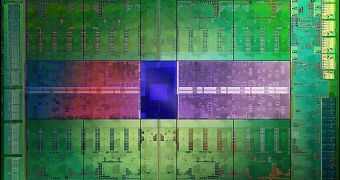During the first quarter of this year (2012), NVIDIA said, multiple times, that the 28nm manufacturing process wasn't going through the same yield issues as the 40nm technology.
In fact, the Santa Clara, California-based company was fairly optimistic about the whole thing, and TSMC itself said the process was doing better than expected.
As more time passed, though, it became more and more obvious that Kepler GPUs were not, in fact, abundant, meaning that GTX 680 graphics cards and 600M mobile GPUs suffered from shortages.
NVIDIA eventually admitted to the issue and, now, the company has been forced to do it again.
For those who missed it, the corporation published the financial results for the first quarter of its Fiscal Year 2013.
Revenue was down 3%, but profits plummeted by almost half: 47.9%,
Don't get the wrong idea: this outcome wasn't caused by the Kepler. The GeForce GTX 680 is a reasonably recent arrival (more or less), and it isn't something people were ever going to buy en masse. The same goes for the even newest GeForce GTX 670.
What the current supply-demand situation will do is what happened to the Fermi architecture: slow down sales through low graphics processing unit availability.
It won't be quite to the same extent, but NVIDIA clearly said, during its quarterly conference call with financial analysts, that the second quarter of FY2013 was going to fall short of stellar.
Becoming a priority on TSMC's list of 28nm customers, ahead of AMD and Qualcomm, will help somewhat, but not by too much.
"Demand is high for Kepler and although supply will continue to improve, we are not able to meet all our OEM and channel demand in Q2 FY2013. We do not expect the 28nm supply situation to resolve itself until later this year," said Chris Evenden, director of investor relations at Nvidia.

 14 DAY TRIAL //
14 DAY TRIAL //